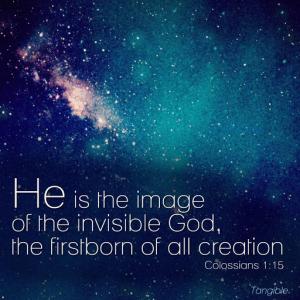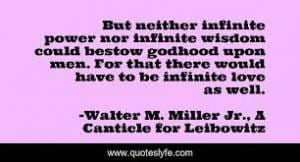Part 3 on David Tracy’s Fragments, Chapter Two

I’m returning to David Tracy and his new publication Fragments: The Existential Situation of Our Time. Two earlier posts on Fragments are here and here. In Chapter Two Tracy takes up two topics that most people associate with divinity–the invisible and the infinite. Questions on Tracy’s mind include:
- Do these concepts make sense, or are they just empty words when we apply them to God?
- Do these concepts apply to anything else besides God?
My other question as I approach this chapter: Are we saying something good about God with these two concepts, especially the concept of infinity?
Things invisible: The little ones
Tracy names some invisible things that don’t seem to have much to do with God. He says we inflict invisibility “on all marginalized persons and groups.” These include people of color, women, gay and transgender persons, prisoners, the homeless—a list that “seems to grow exponentially.” (p. 35-36) Tracy goes on to say he’s most interested in the intellectual forms of invisibility in mathematics and science. But before following him there I’ll pause over that list of persons we make invisible.
Although “invisible” here is a metaphor, it’s literally true that Jesus was a member of such a marginalized group. That tells us something about God. As prophets long before Jesus knew, God favors the invisible ones among us. Even more, God makes a home among them, becoming one of these little ones. God’s power, paradoxically stronger than strength, is the power of the invisible ones. These past days I’ve seen, and blogged about, God’s power acting through George Floyd, victim of police violence, and through the powerless but no longer dominated ones marching on his account.
Philosophers have named the ultimate invisible one. For Aristotle it’s the unmoved mover. Thomas Aquinas has Esse, or the To Be. Plato and others name the Good beyond Being. The three radical monotheisms, Judaism, Christianity, and Islam affirm the “Source, Creator, Sustainer, and End of all reality.” Christianity, unlike the others, is ambiguous about God’s invisibility. The invisible God becomes visible in Jesus. Jews and Muslims so stress God’s invisibility that they forbid images of God while in Christianity such images abound.
Islamic State, Tracy says, is “aniconic (anti-image) Islam gone mad.” It carries to a hideous extreme the anti-world tendency of some religions and philosophies. That would include some anti-body forms of Christianity. But hatred of bodies and the material world is hardly fitting, Tracy says, “in a religion based on a belief in a tangible, visible incarnation of God in human flesh. (p. 38)
Invisible mathematical and scientific things
Popular religion of many kinds attests to the human tendency to make images even of invisible things. That includes Christians’ finding an image of God in the poor. But such a tendency doesn’t take away, and may even add to, the doubt among those with a more intellectual bent that belief in an invisible God, Source, Good, or whatever has any real or even possible object. If Tracy is anything, He’s an intellectual. Tracy’s next step is to find the concept of invisibility operating in two highly intellectual disciplines – mathematics and science.
Tracy recalls the definition of a circle in ancient and modern mathematics: “a locus of coplanar points equidistant from the center.” It’s like a wheel with spokes radiating out from a central hub to the rim. Except every mathematician knows that it’s not like that. In fact, it’s not like any visible thing or even anything we can imagine. The perfect circle exists only as an intellectual construct, and the same is true of mathematical lines, points, and any figure of however many dimensions. Yet with these and similar concepts science quantifies our observations of the real world.
There is the real, visible world of ordinary experience, including things like the table made of wood that I sit down at for breakfast. Then there’s Arthur Eddington’s famous “other table,” consisting of things that we imagine as ultimate building blocks. In order of descending size and ascending ultimacy, we name molecules; atoms; protons, neutrons, and electrons; different flavors of quarks; and, finally maybe, strings.
Tracy asks, Which of Eddington’s two tables is more real, and his answer is intriguing. The “theoretical table,” Tracy says, “is ‘more’ real than the material table because it adds another understanding to the wooden table I see and touch.” (p. 43)
Clarifying Christian belief
I’m going to risk the question, What is Tracy doing with this excursion into invisibility in mathematics and science? I don’t believe he is trying to convince intellectual despisers that Christians don’t really believe in fairy-tale, invisible beings. Tracy’s is not the retort, “Well, you believe in invisible things, too.” He’s not offering evidence that another invisible being, God, exists. Tracy’s thinking doesn’t seem to go in those directions, and they don’t seem very helpful to me.
The examples of mathematics and science do help me to think about believing in a new way. It’s like what happens when you look at all of reality in a new way. Think about these momentous events:
- Humans learned to manipulate things mentally by means of number.
- Euclid and the Greeks invented geometry.
- Galileo and Newton applied mathematics to the motions of bodies, ushering in the age of modern science and, eventually, relativity and quantum mechanics.
Something like that is what happens with religious belief. It’s not like adding a new thing to our list of realities. (The world and God don’t make two any more than Eddington’s “two tables” are really two.) It’s looking at the world we always knew in a new way.
Tracy’s list of the ways different cultures and religions name the ultimate invisible also is useful in this way. Most of them don’t seem to be anything like a previously unknown being to add to the list of real things. Imagine:
- Buddhism’s Void
- The Chinese Tao
- Plato’s Good beyond being
- Plotinus’ One/Good
- Emerson’s Nature
- Heidegger’s the Open
- Even Thomas Aquinas’ Esse (To Be)
In such company “God,” which Tracy prefers, seems like an outlier, more thing-like and definitely more personal. But Tracy says try imagining “God” not as a noun but as a verb.
The artistic and religious invisible worlds
Great artists, Tracy says, “allow us to enter … another form of invisible reality.” (p. 43) He describes this new invisible world: “profoundly moving, intellectually illuminating, harmonious, rhythmic … beautiful even in its discordant notes and at times sublime in its deepest moments.” (p. 43) Tracy expects us to see truth in this realm “too deep for tears”:
Poets, like genuine mystics, seem to break through the usual rational boundaries to express truths different from and sometimes beyond the truths of science and philosophy, with their clearer limits. (p. 44)
Tracy’s use of the words “boundaries” and “limits” points toward what lies beyond those controlling restrictions. Not only artists and mystics know this realm. Certain experiences, situations, and questions surprise us with revelations of something beyond limits. These are:
- Limit-experiences – falling in love, spontaneous joy, ennui, despair
- Limit-situations – death of one’s beloved or an unbreakable sense of one’s own not-so-future death
- And limit-questions – Why be moral at all? How can science function so amazingly well if there is no intelligibility to the whole? (Einstein: “The most incomprehensible thing about the universe is that it is comprehensible.”) (p. 46)
Such extraordinary, but not so uncommon, moments bring us face-to-face with what one might call a religious, or spiritual, dimension of reality. By breaking through limits they provide Tracy with
… a name that informs all the names for the ultimate invisible – namely the all-important name and idea of the infinite in science, philosophy, theology, art, and religion…. Infinite open, Infinite Being, Infinite Good, the gods revealing infinite divine power, the Infinite God. (p. 46-47)
Naming God as infinite is too easy for us modern Christians. What does it mean? Is it even something good or just amorphous, chaotic? The next post in this series follows, with Tracy, the surprisingly difficult path by which people learned to call Ultimate Reality “infinite.”
Image credit: Cross Words












